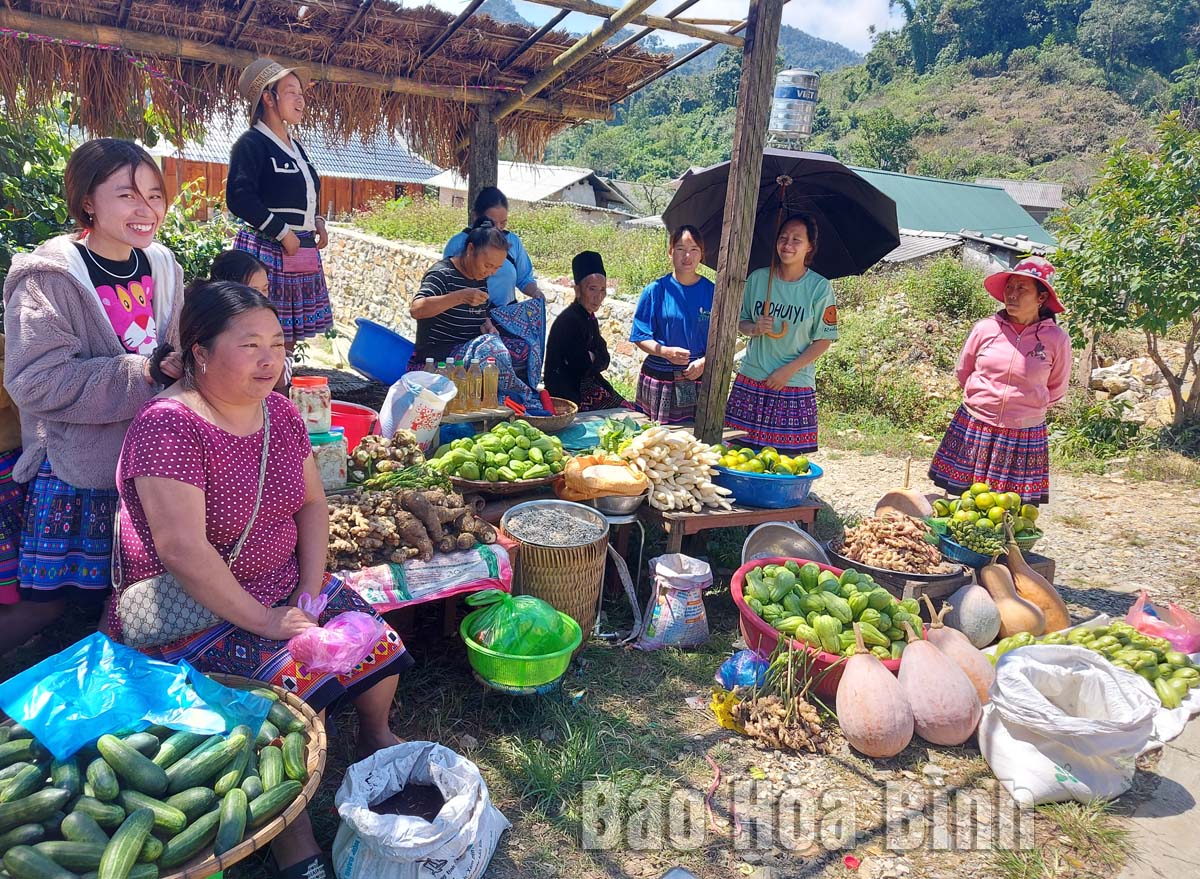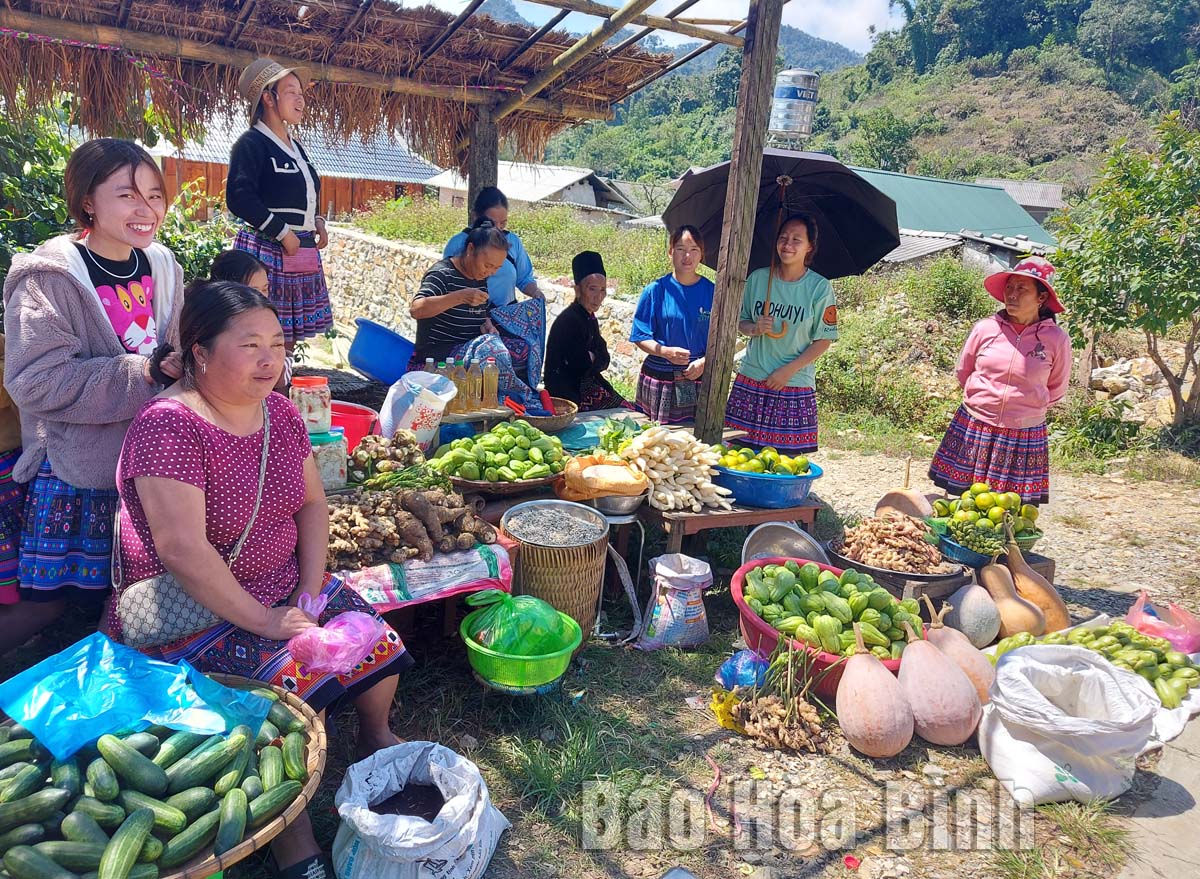
(HBO) – Pa Co commune in Mai Chau district has significantly changed in recent years, with its roads concreted and local residents selling a variety of goods to serve tourism and domestic consumption.

People sell local products to serve tourists in Cha
Day hamlet, Pa Co commune, Mai Chau district.
Pa Co’s Cha Day hamlet now has the appearance of a new-style
rural area. The hamlet has established self-managing groups in residential
areas, built a cultural lifestyle, upgraded the landscape and environment, and
stepped up the development of production, animal husbandry and services
provision. Cha Day has about dozens of households, with women having skills in
weaving, and children allowed to go school.
Pa Co – one of the two communes of Mong ethnic minority
people once known as a hotspot for security issues and drug trafficking – is
gradually changing as a result of attentions and investment from the Party and
State.
Sung A Sia, Chairman of the Pa Co People’s Committee, said
as a difficult area, Pa Co has received attentions of the province and the
district for investment in roads, schools, clinics, electricity grids,
agricultural production and tourism serving its growth.
Located at an altitude of more than 1,000m, Pa Co has a
year-round cool climate, primeval forests, and many popular products such as
Shan Tuyet tea and traditional handicrafts. Such advantages have been tapped
for community-based tourism development. So far, the commune has become an
attractive destination for domestic and international tourists.
The
Hoa Binh Party Committee has directed units to continue implementing Project
No. 09-DA/TU on improving the quality of activities of Party organisations and
administrations at the grassroots levels in association with socio-economic
development in Hang Kia and Pa Co communes. The direction covers a series of
measures to mobilise capital sources for investment in building socio-economic
infrastructure; raise public awareness on the matter; improve the operational
efficiency of the political system; and better the material and spiritual lives
of the people of the two communes.
The Department of Education and Training of Hoa Binh province held a conference on March 18 to review the performance of the "Safe and Happy School" Project and set out tasks for 2025. The project, funded by the Taiwan Fund for Children and Families (TFCF), aims to create a safe, inclusive, and supportive learning environment for students. The event saw the attendance of representatives from the TFCF and 26 beneficiary schools.
With over 70% of their workers being women, trade unions across industrial parks (IPs) in Hoa Binh have been actively safeguarding their legal rights and interests while implementing initiatives to improve their income and well-being.
In recent years, the Hoa Binh provincial General Hospital has continuously innovated itself and improved the quality of medical services to meet the increasing needs of local people. With substantial investments in infrastructure and modern equipment, along with a team of highly qualified doctors and nurses, the hospital has gradually established itself as one of the leading medical units in the Northwestern region and a trusted destination for healthcare for people inside and outside the province.
From mastering the fundamentals of programming to achieving national recognition, the Programming Club of the Le Van Tam Primary School (STAR LVT28) in Hoa Binh city has made remarkable strides in the field of robotics.
The Ho Chi Minh Communist Youth Union Committee and the Vietnam Youth Federation chapter of Hoa Binh province organised a programme on March 12 to launch the "Digital Literacy" movement and an online quiz on the resolutions of the Vietnam Youth Federation congresses at all levels, as well as the Politburo's Resolution No. 57-NQ/TW on breakthroughs in the development of science, technology, innovation, and national digital transformation.
As climate change grows more unpredictable, the development of production forests has become essential - not just for economic growth, but for safeguarding the environment and maintaining ecosystem balance. By boosting local incomes, curbing natural disasters, preventing soil erosion, and protecting water resources, these forests play a crucial role in sustainable development.



